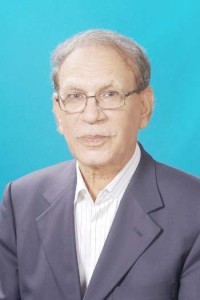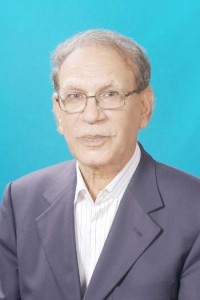The State Bank of Pakistan (SBP) maintained the benchmark interest rate on Saturday at 5.75% for the next two months. SBP Governor Ashraf Wathra said: “Pakistan’s economic growth is set to increase in 2016-17. The impetus will be from a number of factors, including an increase in investment under the Public Sector Development Program (PSDP) and the China-Pakistan Economic Corridor (CPEC), improved energy availability, healthy private-sector credit uptake, and improved law and order situation.” He also said that adverse supply shocks, continued declining trend in commodity prices, and any setback to the security situation may hamper the possibility of attaining the GDP growth target of 5.7% in 2016-17. The government is also set to increase gas tariff and possibly electricity tariff also, and as a result inflation will be more than the targeted rate. Thus, there was need to increase benchmark interest rate by at least 0.25 per cent.
During 2012 and 2013, the State Bank of Pakistan had already brought down the policy rate from 14 per cent to 9.5 per cent, a reduction of 4.5 percentage points, which was later enhanced by 0.5 percent to make it 10 per cent. Since 2013, SBP has reduced interest rate by 4.25 per cent to bring it to 5.75 per cent. Of course, interest rates are very low around the developed world; near-zero in nominal terms and negative in real terms. But this is part of a deliberate policy by central banks in Europe and elsewhere to discourage saving and encourage borrowing/spending. In developed countries, there is handsome pension on retirement of employees, and the government also pays dole to the unemployed citizens. But in Pakistan, in the absence of such welfare plans people have to save for old age or rainy days.
However, they would have little incentive to save if the interest is very low; or if inflation, which erodes the income of salaried class and fixed income groups, rises much faster than the interest earned on savings. Potential savers are then forced to turn to other riskier alternatives i.e. stocks, bonds, or funds. In late 1990s, when interest rate was low, people had started investing in shares of companies listed on stock exchange. Since they were not shrewd investors, they became victims of the stock brokers and big investors’ manipulations. Since late 1980s, our economic managers had envisaged that economy be driven by consumption rather than investment; and SBP had started reducing the policy rate in late 1990s. Since 1998 commercial banks reduced interest on ‘term deposit accounts’ and had brought it down to 4 per cent from 9 per cent over a period four years.
Today commercial banks are paying less than four percent to Savings Account holders and charge around 6 per cent on term deposits. It goes without saying that inflation fattens feudal duck and the industrial robber barons due to ever-rising prices; as such a situation enhances the value of their property, land and building as well as machinery. This is the main reason that share prices in the Karachi Stock Exchange have risen to unprecedented highs of more than 39000 points. In normal circumstances, the share price index rises if the listed companies announce handsome dividends, and their reserves also increase. But this is not the case in Pakistan. It should be borne in mind that any further cut in the bank rate is likely to discourage savings, which are already lowest as compared with other countries in the region.
- Latest
- Trending




